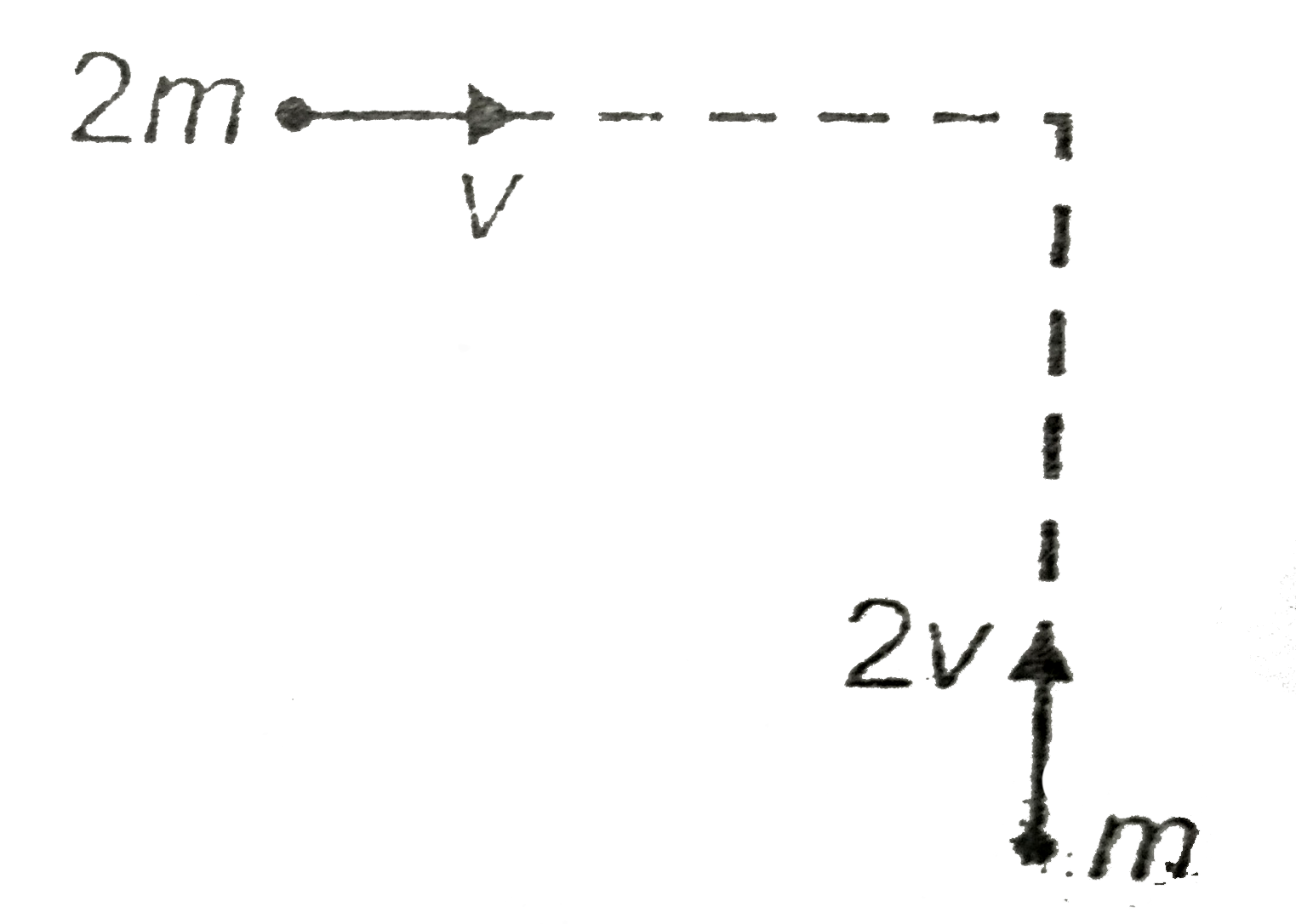Two particles of masses m1andm2 moving with velocities u1andu2 , respectively and making an angle θ between them, collide with each other. After collision, the 1st particle travels in the initial direction of motion of the 2nd, and vice-verses. Find the velocities of the two particles after collision. Under what condition, would this collision be elastic ?
Suppose v1,v2 are the velocities of the two particles, respectively, after collision . The particles before and after collision move as shown in Fig.1.44 .It also shows the chosen directions of the x and the y-axis.

For momentum conservation along the x-axis, we get,
m1u1cosθ2+m2u2cosθ2=m1v1cosθ2+m2v2cosθ2or,m1u1+m2u2=m1v1+m2v2 .......(1)
Similarly along the y-axis, we get,
−m1u1sinθ2+m2u2sinθ2=m1v1sinθ2−m2v2sinθ2or,−m1u1+m2u2=m1v1−m2v2.....(2)
Adding equations (1) and (2) ,
2m2u2=2m1v1
or,v1=m2m1u1.......(3)
Subtracting equation (2) from (1) ,
2m1u1=2m2v2
or,v2=m1m2u1.......(4)
The kinetic energy before collision is,
K1=12m1u21+12u22
and that after collision is
K2=12m1v21+12m2v22=12m1(m2m1u2)2+12m2(m1m2u1)2
=12m2m1m2u22+12m1m2m1u21
Here K1≠K2 , so the collision is inelastic, in general. As a special case , it would be an elastic collision if K1=K2 . It is possible only when m1=m2 , i.e., the two particles are of equal masses.
Topper's Solved these Questions
- WORK AND ENERGYBOOK - CHHAYA PUBLICATIONCHAPTER - WORK AND ENERGYEXERCISE - SECTION RELATED QUESTIONS
24 Videos
- WORK AND ENERGYBOOK - CHHAYA PUBLICATIONCHAPTER - WORK AND ENERGYEXERCISE - HIGHER ORDER THINKING SKILL (HOTS) QUESTIONS
38 Videos
- WBCHSE QUESTION PAPER -2019BOOK - CHHAYA PUBLICATIONCHAPTER - WBCHSE QUESTION PAPER -2019EXERCISE - SECTION - II ( GROUP -D)
10 Videos
Similar Questions
A particle of mass m strikes another particle of same at rest. Find the angle between velocities of particles after the collision , if the collision is elastic.
View SolutionTwo particles of masses m and 2m moving in opposite directions collide elastically with velocity 2v and v, respectiely. Find their velocities after collision.

View Solution
Knowledge Check
Two particles of mass m and 2 m moving in opposite directions collide elastically with velocities v and 2v. Find their velocities after collision.
A0, 3vB1, 3vC0, 1vD0, 4vConsider two particles of equal mass m. If one particle is stationary while the other collides with this particle obliquely with velocity v. Now, what is the angle between the velocity vectors of the two particles after the collision?
A45∘B30∘C90∘Dnone of theseTwo particles of masses m1 and m2 and velocities u1 and αu1(α≠0) make an elastic head on collision. If the initial kinetic energies of the two particles are equal and m1 comes to rest after collision, then
Au1u2=√2+1Bu1u2=√2−1Cm2m1=3+2√2Dm2m1=3−2√2
Two particles of masses m and 2m moving in opposite directions collide elastically with velocity 2v and v, respectiely. Find their velocities after collision.

View SolutionTwo particles of mass 2m and m moving with speed v and 2v respectively pependicular to each other collides perfectly inelastically, then

Find the angle with the horizontal to which the particles move after collision.
View SolutionTwo particles of mass 2m and m moving with speed v and 2v respectively pependicular to each other collides perfectly inelastically, then

Find the angle with the horizontal to which the particles move after collision.
View SolutionA particle of mass m1 moves with velocity v1 and collides with another particle at rest of equal mass. The velocity of the second particle after the elastic collision is
View SolutionTwo particles of masses m1,m2 move with initial velocities u1andu2. On collision , one of the particles get excited to higher level , after absorbing energy ε. If final velocities of particles be v1 and v2 then we must have
View Solution
